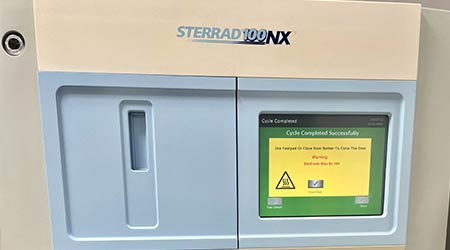
What Is STERRAD® Functionality and Efficacy Validation Testing?
STERRAD® sterilization functionality and efficacy validation testing is a critical step in ensuring the safety and quality of medical devices. It refers to the process of testing the STERRAD® sterilizer’s ability to effectively kill microorganisms on medical devices while also maintaining their performance.
The STERRAD® system is widely used in healthcare facilities for its effectiveness, speed, and compatibility with a variety of medical devices. However, it is crucial to validate its efficacy regularly to ensure that the system is functioning properly and providing adequate sterilization.
Why Is STERRAD® Validation Testing Important?
STERRAD® sterilization functionality and efficacy validation testing is essential for several reasons:
Compliance: Regulatory bodies such as the Food and Drug Administration (FDA) and the Centers for Disease Control and Prevention (CDC) require healthcare facilities to validate their sterilization processes regularly. Failure to comply with these regulations can result in fines, legal consequences, and most importantly, compromised patient safety.
Patient Safety: Medical devices that are not properly sterilized can pose a significant risk to patients by potentially transferring harmful microorganisms. This could lead to infections, compromised health, and even death. Regular validation testing ensures that the STERRAD® sterilizer is functioning correctly and effectively killing microorganisms.
Quality Assurance: Validation testing also serves as a quality assurance measure for healthcare facilities. It helps identify any potential issues with the sterilization process and allows for adjustments or improvements to be made before they compromise patient safety. It also provides peace of mind for healthcare providers and patients, knowing that their medical devices are being properly sterilized.
What Does STERRAD® Validation Testing Involve?
STERRAD® functionality and efficacy validation includes several steps to ensure the system’s effectiveness:
Biological Indicators: The first step is to use biological indicators (BIs) to test the STERRAD® system’s efficacy. These are small strips or discs containing live microorganisms that are more resistant to sterilization than typical bacteria found on medical devices.
Exposure: The BIs are placed in specific locations throughout the sterilization chamber, and the STERRAD® system is run through a complete cycle according to its instructions for use (IFU). The exposure time and temperature are carefully monitored to ensure they meet the required parameters.
Incubation: After the cycle is complete, the BIs are removed and incubated for a specific period at a specified temperature. This allows any surviving microorganisms to grow and be detected.
Results: The BIs are then examined for growth. If none are present, the STERRAD® sterilization system is deemed to have effectively sterilized the BIs and, by extension, any medical devices that were in the chamber during the cycle.
HIGHPOWER’s Extensive Expertise
HIGHPOWER Labs has received specialized ASP training in order to perform STERRAD® functionality and efficacy validation testing. HIGHPOWER purchased its first STERRAD® sterilizer in 2002 with members of our management team, scientists and technicians later traveling to ASP’s corporate headquarters in Irvine, California for several days of intense coaching and education. This partnership has continued for over 20 years.
HIGHPOWER has validated a multitude of devices for processing in this popular low temperature hydrogen peroxide sterilization process and we are available to assist you in all of your STERRAD® functionality and efficacy validation needs.
STERRAD® 100S, NX and 100NX sterilization processes are available for validation and materials compatibility testing.
